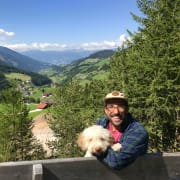Come Hell or High Water, Surfing Nazare’s 100-Foot Waves Is a Laureano Family Affair

It is a routine October morning in the coastal city of Nazaré, Portugal, when the booms become louder. Deep, thunderous, like distant cannons fired at perfectly timed intervals, like a giant as its steps crush the earth.
Traffic along the beachside promenade is eerily serene, and wisps of low fog cling to the lampposts. The marine layer idles with the autumn sun rising later. In the summer millions of tourists fill the streets and cover the beaches. But with the shuttered shops and half-empty cafés, Nazaré has all the signs of a sleepy beach town recovering from the summer surge—except for the booms. The booms persist. The booms tell you that a new season approaches. It is the pulse of a town reborn.
The shops used to shut in October; now they restock for the surfing that gets better as the weather gets worse. Not long after the beachgoers and sunseekers leave, the surfers and swell chasers trickle in. It is an ebb and flow forged out of the last decade as word spread of legendary waves reaching 100 feet, waves so large surfers need to alert the maritime police, waves so large they require jet skis to tow surfers into the swell and rescue them afterward.
“These waves here have so much power,” says big-wave rescuer Ramon Laureano. “It is a myth for everyone, but for us it’s just Nazaré. It’s home.”
Aboard a high-speed Yamaha jet ski, Laureano floats us through the no-wake zone of the Nazaré marina. Laureano, 51, is the closest thing Nazaré has to a guardian angel. Decades ago he arrived from Brazil to chase the swells; now he shepherds waves to shore atop a jet ski, waiting for a flailing arm to burst from the whitewater. His mission is to protect anyone who dares to run the gantlet, to search for surfers who fall out of the sky.
But for six years, the most harrowing rescue has been his 21-year-old son Tony.
“My wife always says that at least when Tony falls, his dad is out there, because she knows that I’ll give my life for him,” Ramon says. “At least I know that I am the one that can save him. It’s the only thing I control.”
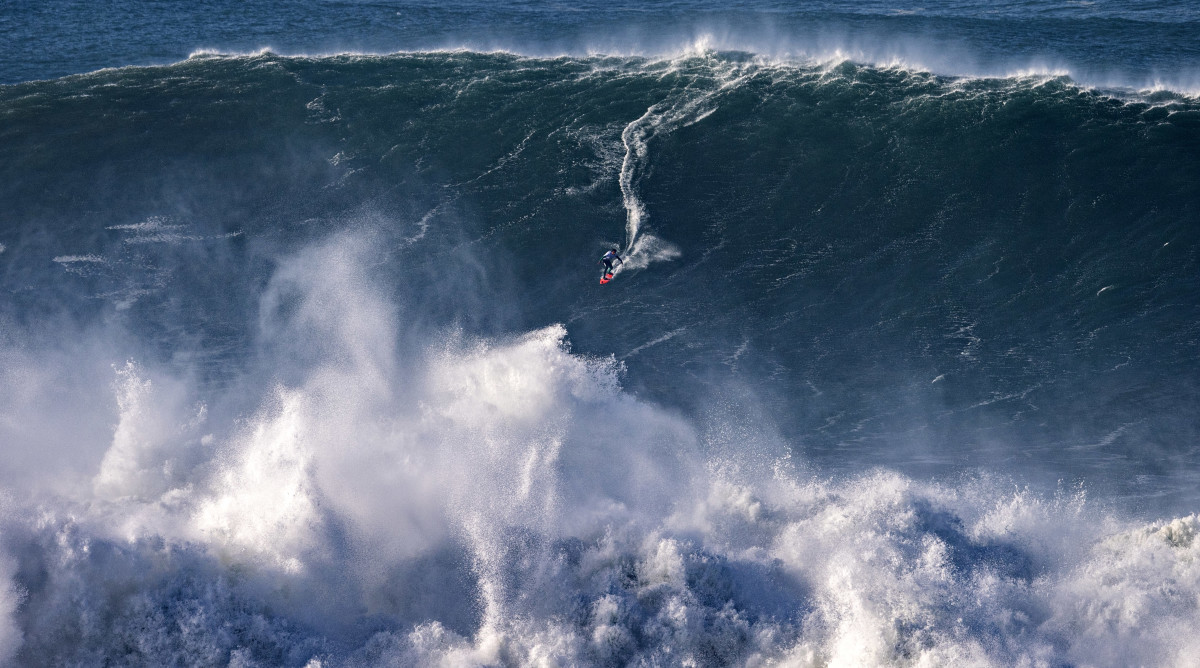
Nazaré’s tempo is a simple, violent waltz. With the sound of a pressurized, high-pitched sip, the wave breathes you in, pauses to muster its payload and then exhales a nuclear hurricane. Inhale, charge, detonate. The reality of Nazaré is that it regards immortality in the Spartan sense, glory always dangling from the precipice of death.
Just beyond the breakwater, the wind whips up waves with vigor and the sea rages. A beat-up fishing vessel displaying three colors of rust enters the marina, and the crew waves, because everyone in Nazaré knows Ramon Laureano. He’s the dad who routinely ferries his son into a maelstrom in the same the way that fathers and sons play catch in the backyard, the same dad that towed his teenage son into what many claim to be a 100-foot wave.
“You know that your life is at risk, but you love it so much that you still try. I think that’s what makes it special,” Tony says. “… But I need to surf with people I love. I need to surf with people I trust.”
From atop Nazaré’s cliffs, where an ancient fort looks over the ocean, the waves look like ever-shifting dunes rolling to a hypnotic rhythm. But among them, beneath their colossal rise and fall, it is an ambush. Each crash sends fissures through your body. The explosion echoes in your ears and renders your limbs useless. Adrenaline surges to a feral level until your mind tells you to panic.
Feeling my grip tighten around the life vest, Laureano whips the jet ski around and dumps us into the water. He loops to simulate a rescue and yanks me back on the jet ski within seconds. With a shriek of laughter and a maniacal grin, he yells in Spanish: “¡Mira, no es nada!” (See, it’s no big deal!) The baptism is complete, the nerves are gone and only then does he send us skipping like a stone across the swell.
He points out at sea, where a wave creeps toward us. It grows to 10 feet and then 20 feet. At 30 feet it turns the sinister indigo-gray of a thundercloud. Then it’s the size of a Brooklyn brownstone, and the wave finally starts to crest. The energy brews; it keeps growing. 40 feet. The peak begins to curl and, suddenly, an ominous shadow passes over us.
The shadow is the signal for Laureano to launch us diagonally up and across the wave. Water slaps you in the face. The sound of the falling wave is a visceral grumble. It stays in your head like a death rattle. “It’s one of the scariest sounds ever,” Tony says. “It’s silence, and then like a bomb behind you. And then, if you’re lucky, you hear the crowd cheering.”
It feels like we’re running from mountains exploded by dynamite. Along an ocean wall marbled by the blue-and-white streaks, we climb the edge until Ramon calmly shoots us over the side of the wave. He cuts the engine and points down. Beneath us is the longest submarine canyon in Europe—three miles deep and 125 miles long. He explains how a wave funnels down the canyon, gaining speed until it hits the canyon’s lip and ramps up to join an already heaving swell to form a “Big Mama,” the moniker for Nazaré’s world-record surges.
“The first time I saw Big Mama, it was an intense feeling,” Ramon says. “It made me really afraid. They were giants. Three times bigger than anything I’ve ever seen. And that’s when we said, ‘We have to try it. There is nothing more worth it than this.’”
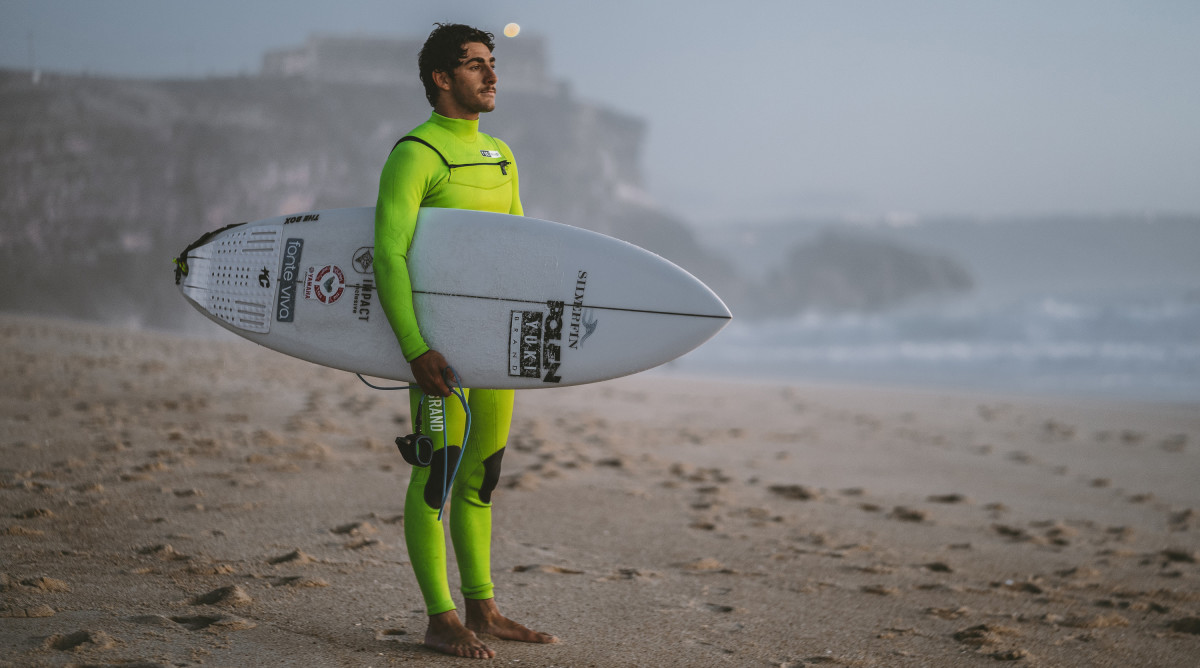
Ramon’s soliloquies mirror an astronaut talking about space. There’s lots of talk about frontiers, about pushing human limits and finding yourself at the margins of the universe. But there’s nothing that can ready him for when Tony plummets from a wave and disappears beneath. He has to be prepared to act—come hell or high water.
“When the spotter on the radio says, ‘He’s down,’ my heart flies through my mind. And I have to calm myself immediately, because they could need me to go get him.
“I try not to think bad things, but they’ll always be at the front of your mind. Within seconds, you’re thinking about how you’re going to save him while all these things are passing through your head. It’s like angels and devils in my head.”
It’s a true test of whether blood really is thicker than water.
Standing on a cliff by the Nazaré lighthouse, Tony scouts the swell building off Nazaré’s Praia do Norte. A hood is drawn tightly over his head, and the red clay caked to his gym shoes adds two inches to his 5’8” frame. He never starts a day without first greeting the sea, without first confronting the dangers of home.
“When I'm out there I feel fear—it’s impossible to be out there without feeling fear,” Tony says. “Fear is a good thing. Fear lets you know you’re conscious of your life.”
Each morning Tony occupies a strategic position in Nazaré’s big-wave surfing scene. It’s where spotters stand for hours in the cold with two-way radios, directing jet skis with surfers in tow toward waves that are still distant. And where photographers shoot the surfers plummeting down the waves, hoping to chronicle a world record among the thousands of spectators who flood the town.
Tony’s not watching the waves as much as the sand, like Ramon taught him. The way it swirls in the wind and settles high along the shore instead of by the cliff. It tells him the waves are not yet right, that the 2022 season needs to ripen. It is not like the epic October 2020, when Hurricane Epsilon hurled world-record waves at the cliff.
He almost didn’t chase the best wave of his life—bigger than the wave that made him, at 15 years old, the youngest surfer to be nominated for the XXL Big Wave Award, bigger than the epic set that rolled into Spain last year for his highest-profile tournament win. But that mercurial, relentless October swell had battered him. Morale was low, until Ramon, from his jet ski, stoked the flames with a fatherly push: “How about we try one more?” It was all Tony needed to hear.
The video is hazy and shot from a distance. Just 18 years old, Tony is a speck at the center, blazing a path through a wave that continues to bloom, a human missile flying opposite of most surfers at Nazaré and toward the rocks. He remembers standing almost at eye level with the people on the cliff: “It was like mountains of water. I had tears in my eyes from going so fast. I knew it was big, but I had no idea it was that big.”
Months later, the University of Lisbon measured the wave at 101.4 feet. That measurement would’ve set a world record, which would have brought sponsorships and prize money and fame to the Laureano family, but it would need to be verified by the World Surf League (WSL) and Guinness before any records would be handed out. And in big-wave surfing, sometimes the wait time for glory and fame from a 10-second ride can take more than a year.
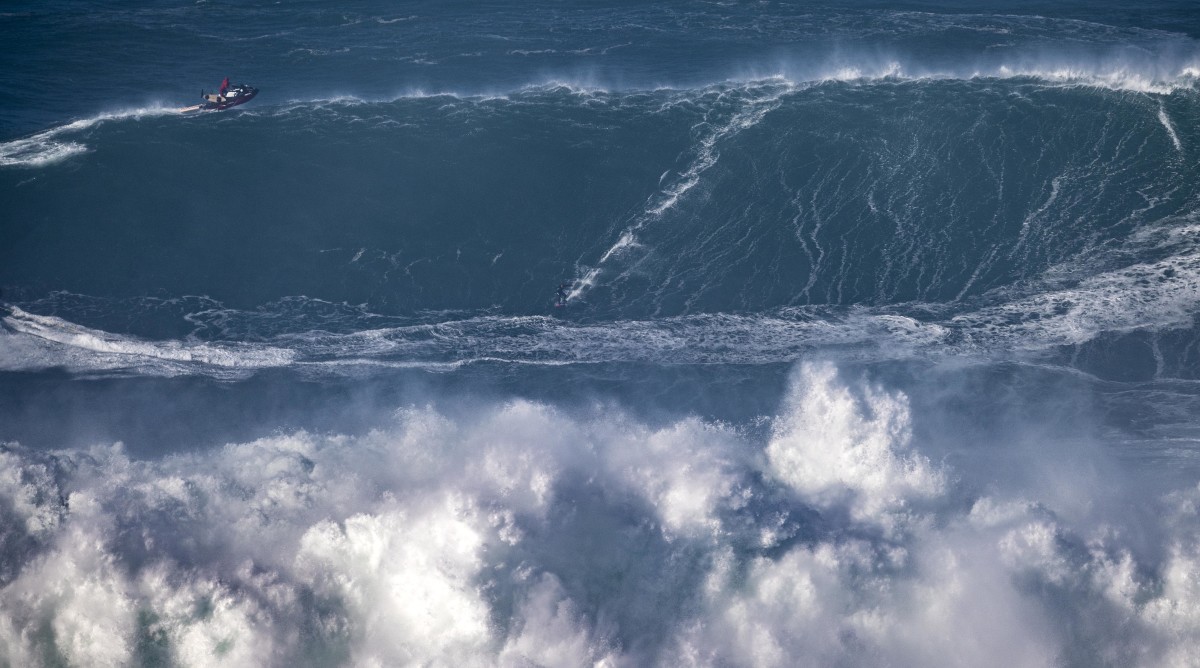
“When I saw the video I didn’t think I had the world record. I just was like, ’No way, that’s me?’” Tony says. “… Yeah, fame is important for a career, but even if I had nothing in my life I would still be out here surfing big waves in Nazaré.”
After towing Tony into the wave, Ramon lost sight of him. He pressed his radio to his ear and tried to keep calm until he heard the cheers from the cliff. The tension turned to joy, and when Ramon pulled Tony back onto the jet ski, they spoke in tongues, trying to reenact the wave using a surfing onomatopoeia of indecipherable vrooms, whooshes and booms.
“When a big wave is coming, he gets this smile on his face and then I get a smile on my face,” Tony says. “Sometimes I see a wave and I can see my name in it.”
In the world of big-wave surfing, preparation decimates the usual tropes of surfers as free-spirited burnouts. Like most modern sports, intense weightlifting regimens, sport psychologists and year-round conditioning form the nucleus of training—all for a swell that may never come.
“They are doing superhuman feats,” says former WSL CEO Erik Logan. “But you can be a big-wave surfer and maybe only surf one sanctioned event from the WSL [per year] if we get waves. So you’re training year round for that one opportunity.”
Augusto “Guto” Bayard is a Brazilian guru of big-wave training for his focus on physics and simulation exercises. He often adapts Navy SEAL drills to prepare big-wave surfers for every possible agent of stress: “The best way to confront the wipeout is to build them up physically but also mentally,” Guto says.
To get surfers to think underwater, Guto, 44, sinks clothes—socks, jackets, jeans—to the bottom of a pool and makes the surfers add one article at a time. For balance training, Guto swings Tony on a miniature Penny skateboard like a hammer throw. Every session involves video analysis and a crash course in physics. Drawing on a whiteboard, he explains to Tony the dynamics of riding a wave: “When you’re turning on a wave at this speed, it almost becomes like a high-speed motorcyclist turning and leaning almost against the ground. We want to use that torque in the same way.”
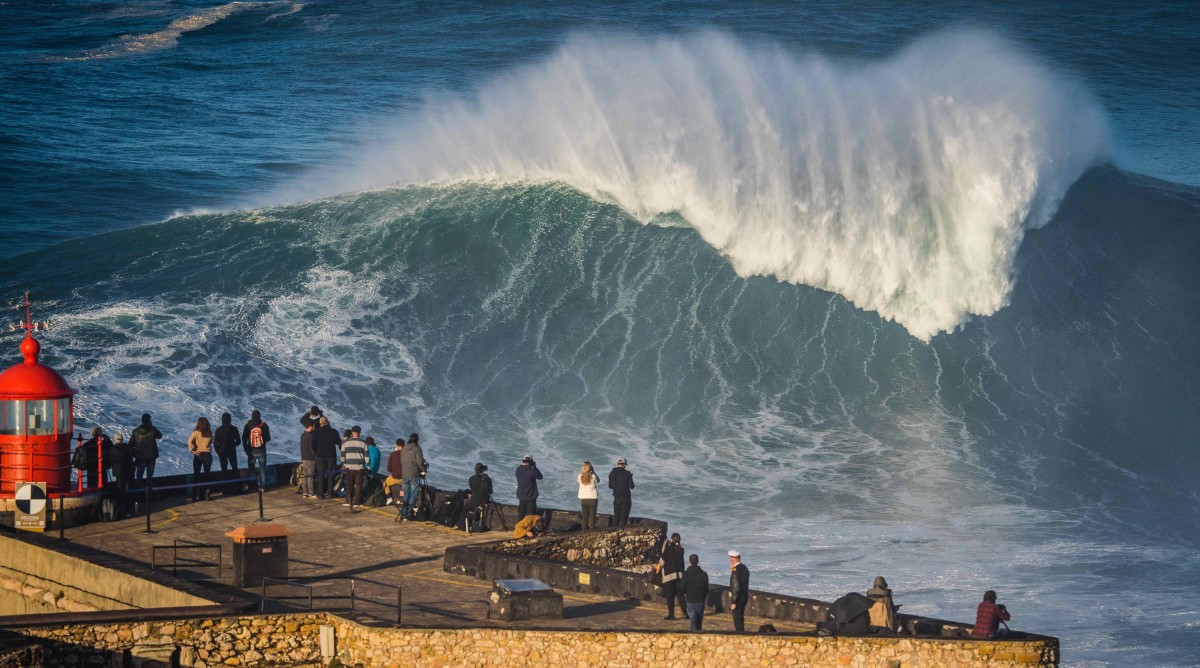
Guto makes Tony do burpees with a dumbbell underwater and then sharply splashes Tony in the face, because that’s what a jet ski would do upon rescuing him. He teaches Tony how to curl up in a ball when he wipes out to not risk having his limbs forcibly removed like a ragdoll. He reminds Tony to keep his hands on his shoulder pad so he’s ready to pull the tab that acts as an eject button, filling his wetsuit with carbon dioxide and sending him to the surface.
“The feeling [of a wipeout] is like you’re getting kicked and punched by 50 people,” Tony says. “Time stops, and I’m just literally thinking of nothing. It’s almost peaceful.”
In response, Guto scolds, “No, no, no. You need to think more without oxygen to keep your calm.” Then he playfully chides Tony for his diet—like most 21-year-olds, late-night McDonald’s runs are not uncommon.
But when asked how to simulate the fear of seeing a 100-foot wave that could kill you, the answer is simple. “You just have to go out there and face it,” Guto says with a sigh. It’s the same formula used by a pioneering U.S. surfer more than a decade ago, when no one would dare surf one of Nazaré’s autumn avalanches.
At the end of a foggy clifftop cul-de-sac, a tow-headed toddler by the name of Theia Love Nazaré Celeste Rose McNamara answers the door of her namesake’s most prominent citizen. Her father may be one of surfing’s biggest icons, an Emmy-nominated documentary star, a former Guinness world-record holder and the reason for most house visits, but she says no one can talk to him until they get a tour of her house.
The McNamaras seem to travel by the baker’s dozen. Locals, foreigners, surfers and stragglers drift in and out, and it’s like the opening scene of Home Alone because you’re left asking yourself: Who actually lives here? It is the tide of an open house, where everyone is family and no one goes hungry at the dinner table, which extends to the couches and the stairs and wherever else there’s a seat.
In the kitchen, boxes of fresh fruit are stacked to the ceiling. The living room floor is where one of the McNamara children was born. And setting a fire in the hearth to the tune of Abba’s “Dancing Queen” is Garrett McNamara, who at 56 years old casually shook off the jetlag of a transatlantic flight by immediately surfing the giants he made famous.
“The magic of Nazaré is that it’s so unpredictable—you never know what’s gonna come,” McNamara says. “For me, the magic was all my goals and dreams came true here. It almost feels stuck in time.”
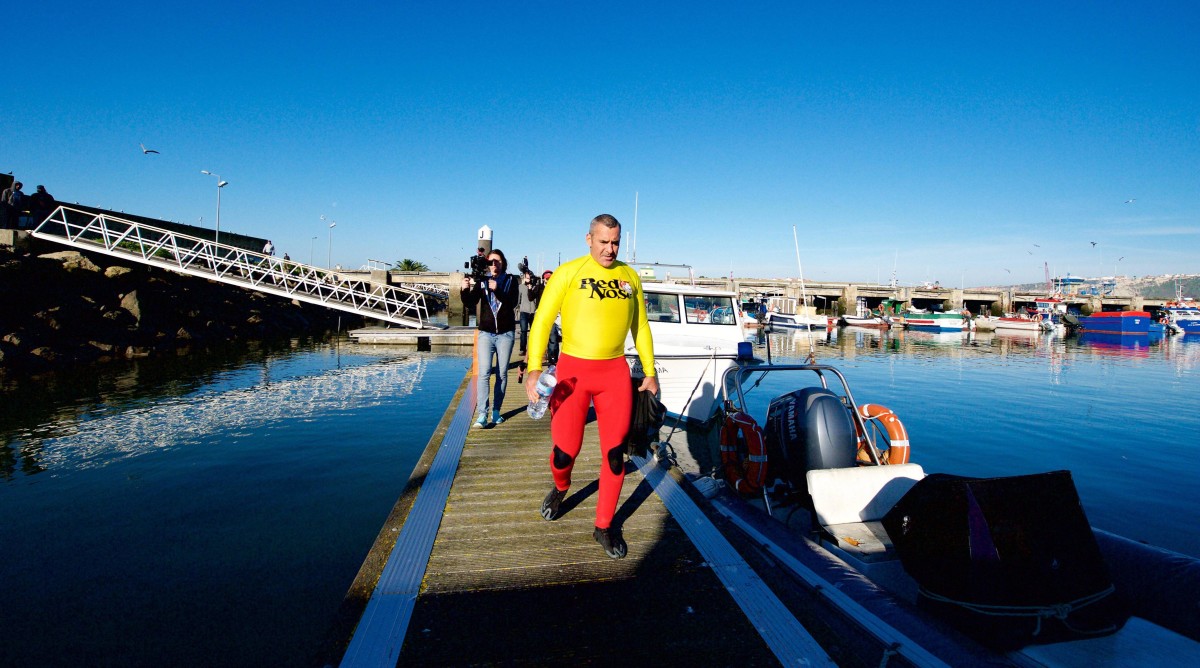
In 2010, spurred on by a photo of a tidal wave sent by a local named Dino Casimiro, McNamara said he came to Nazaré to surf the swells and work with city hall on the North Canyon Project “to bring tourism, so they could generate some income in the winter.” Thirteen big-wave seasons later McNamara’s contributions go beyond making the town a world-renowned surfing destination, which happened in 2011 after the WSL verified his world record for the largest wave surfed (78 feet) off Nazaré’s coast.
“The power of surfing is a universal vessel for so many things,” Logan says. “It captures the mind and undoubtedly is the most romantic and aspirational sport in the world. There’s just nothing else like it. You are riding pure raw energy.”
McNamara led the charge to reopen the lighthouse, where he was married, and turn it into a cultural heritage site that sold more than 370,000 tickets in 2022. Most of Nazaré’s safety protocols are still in place today thanks to his collaboration with the Portuguese navy, which made him the first foreigner to receive the Vasco da Gama medal of honor. His endeavors have brought millions to the town in offseason tourist revenue—A Celeste, the beachside restaurant that sponsored the city’s North Canyon Project features a “Garrett Menu,” where €17 will get you vegetable soup, grilled sea bass, salad, boiled potatoes and a mineral water.
McNamara feels so indebted to Nazaré that he considered running for mayor. His platform would have featured government subsidies for local organic gardeners and local fisherman, and leveling the housing market for locals amid the surfing boom gentrification (the recent arrival of Burger King still makes him cringe).
McNamara introduced the world to Nazaré, but an unknown gift to the town may be inspiring the local kid now tasked with bringing Nazaré to the surfing world. Says Tony: “I remember having dinner with my family and seeing Garrett on TV riding that world-record wave [in 2011] and being like: ‘I want to surf that wave one day.’ Maybe if Garrett never came here, I wouldn’t be a big-wave surfer.”
The irony inherent to big-wave surfing comes in the crowning of its champions. When Usain Bolt crossed the finish line in Berlin in 2009, we knew within milliseconds of his world record. But in big-wave surfing, it takes months to verify and then reveal a world record. Politics, sponsors and a panel of judges all carry weight, but Guinness recognizes the WSL as “the only entity that can validate wave height for tow and paddle [surfing],” Logan said on the process, prior to his dismissal from the WSL in June.
Because the waves are moving targets and the measuring stick is the height of the hunched surfer, determining a world record is a complicated process. When a surfer submits a wave for review, the quality of the photograph, the camera used and the angle from the cliff are noted. A panel of WSL judges then decides whether the surfer completed the wave and whether the wave appears large enough to send to a more precise record verification team. Says Logan: “It’s a long process, because we take everything that’s available … and then use the technology that’s within our disposal to measure and submit a world record.”
Any potential world record (and the $100,000 prize) isn’t commemorated until months later at the Red Bull WSL Big Wave Awards, which also celebrates annual “Ride of the Year” and “Biggest Tow” honors. The current official world record of 86 feet, set by Sebastian Steudtner in Oct. 2020, wasn’t announced until May 2022.
Which brings us back to Tony’s legendary, yet disputed 101.4-foot wave, which occurred on the same day as Steudtner’s official record. Tony said that he and his family never received a reason for why his record wasn’t verified. The WSL confirmed to Sports Illustrated that its judging panel determined that Tony’s wave was not up for world record contention. The organization did not say whether it was due to a ruling on him completing the wave or the way the wave was documented (camera type, angle, clarity, etc.), only that “wave height, height of individual riding the wave and positioning of the surfer were taken into consideration.” Tony’s wave never reached the record verification team for an official measurement since the panel of judges, based on a variety of factors, denied the wave of the opportunity for a more precise ruling that would have occurred in the second step of the verification process.
In the end, the official history of big wave surfing won’t have a record of Tony’s wave, and he won’t share in the spoils (sponsorships, notoriety and prize money) that a record wave would have provided. But in Nazaré, there’s plenty of hope for the next record swell.
Six of the seven biggest waves verified by the WSL, including the last three world records, have all come from Nazaré. The town’s record-setting flair is enshrined in the Nazaré Tow Challenge, a high-profile WSL competition featuring six pairs of big wave surfing’s biggest stars that can be mobilized within 72 hours anytime a major swell comes in between Nov. 15 and March 31. (There was no tournament in 2022 because there wasn’t a major swell.) Yet after competing in the past, Tony has so far been omitted from this upcoming season’s lineup, leaving the Nazaré Tow Challenge without anyone from Nazaré.
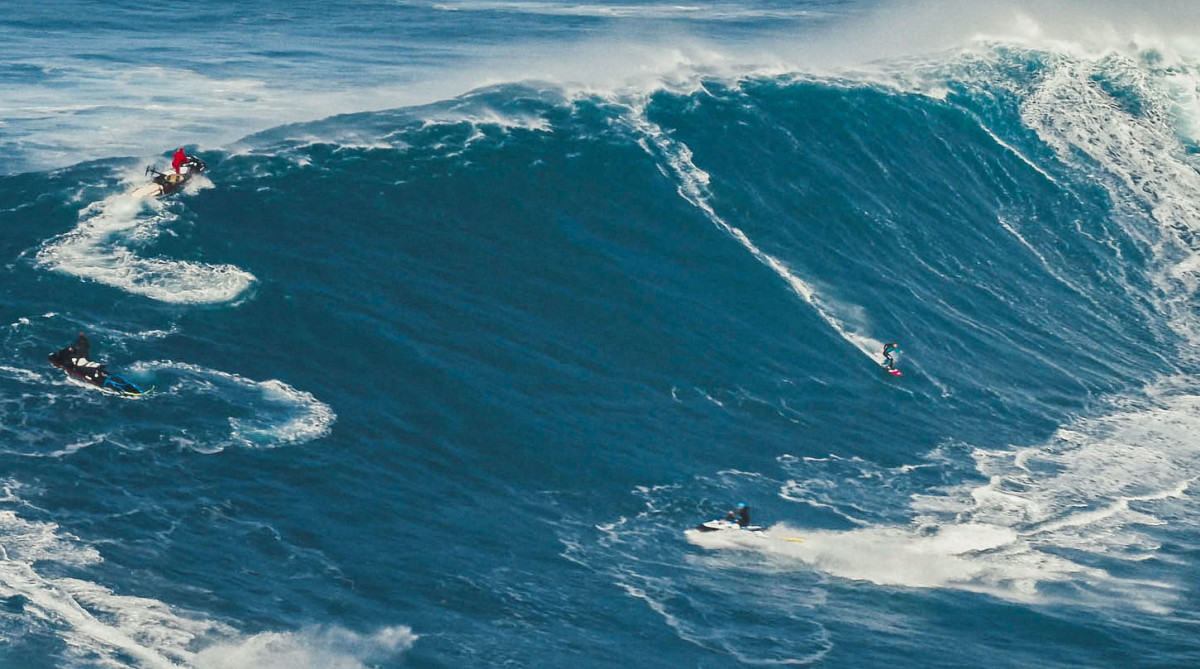
Such notoriety has led to an influx of inexperienced surfers chasing fame throughout the winter, sessions that sometimes feature 40 jet skis in the water and a general disregard for safety protocols. Guided by a team of scientists and locals, McNamara studied Nazaré’s swells for more than a year before he rode the record wave.
“In Nazaré, you can get a one-wave wonder, which then can lead to opportunities to have a career,” McNamara says. “And it leads to a lot of people showing up unprepared. … This is Everest here.”
When HBO’s groundbreaking 100 Foot Wave documentary series asked him to recommend subjects for Season 2, which was recently nominated for six Primetime Emmys and renewed for a third season, McNamara cosigned Tony as “a rising star ready for the limelight.” Even more evocative was the story of Tony’s roots, and the power that family has played in his rise.
“I can’t imagine [towing] my son into those waves,” McNamara says. “I wouldn’t really want him to ride these kinds of waves. … Maybe if he trains from the heart and wants it for the right reasons.”
Like the Laureanos, the McNamaras see big-wave surfing as a familial enterprise. Garrett’s wife, Nicole, manages his career, works as his primary spotter on the cliff, costars in the HBO series and is a world-famous environmental activist. Like the Laureanos, the McNamaras are not chasing swells as much as they are chasing their peace—together. It is a shared dream, where every day surfing together is another day cherished.
“When everything’s going right, it’s just like you just follow your heart,” McNamara says. “And you’re not even in your head at all. At one. The flow state—it exists.”
Whenever Tony rides out, whether the waves are five feet or 50 feet, he shuts his eyes and says a prayer. He first asks for safe passage and he asks for grace. Only then does he ask for the most generous of waves. His intercessor’s name is scrawled on his arm—Maria—in the sprawling, crooked handwriting that can only belong to a child. The 2022 big wave season marked 10 years without his sister. He still speaks to her. He still comes to the ocean to find her, because she knew it offered him solace.
“Those experiences made me,” Tony says. “I wouldn’t be able to live far from the sea. If I spend too much time away, I go a little crazy. It’s my safe place. If anything is happening in my life, I go to the beach.”
While Maria was at the hospital, needing long-term treatment for a brain tumor, Ramon would return from a long shift at the surfboard factory and ferry Tony to the beach. Sometimes Ramon would lead surf lessons or jet-ski safety courses for extra cash, or sometimes they’d just sit and watch the waves roll in. Wherever Ramon was, Tony followed.
Years ago, Ramon realized that the family spent every weekend driving hours up the Portuguese coast for the surf, so they moved into a beach house by Nazaré, the place that first brought him as a surfer from his native Brazil. “Our family is a surf family. Tony’s been surfing since he was 4. My wife works in a surf shop. My youngest daughter loves driving the jet ski. All our life is connected to it.”
When Maria died, just 7 years old, the beach felt most familiar to Tony. Its tempo and tides was his stability. The waves were the same as before, and tomorrow they’d be waiting as well. Tony gravitated to the sea. He saw the giants of Nazaré and sensed her presence in their enduring constancy: “I spent years watching her growing up against a lot of really tough situations like it was nothing. Brave. With courage. The only way I can feel almost like 1% of how my sister was feeling is surfing big waves. The need to be brave in the line of danger. I felt like I needed to do this for her.”
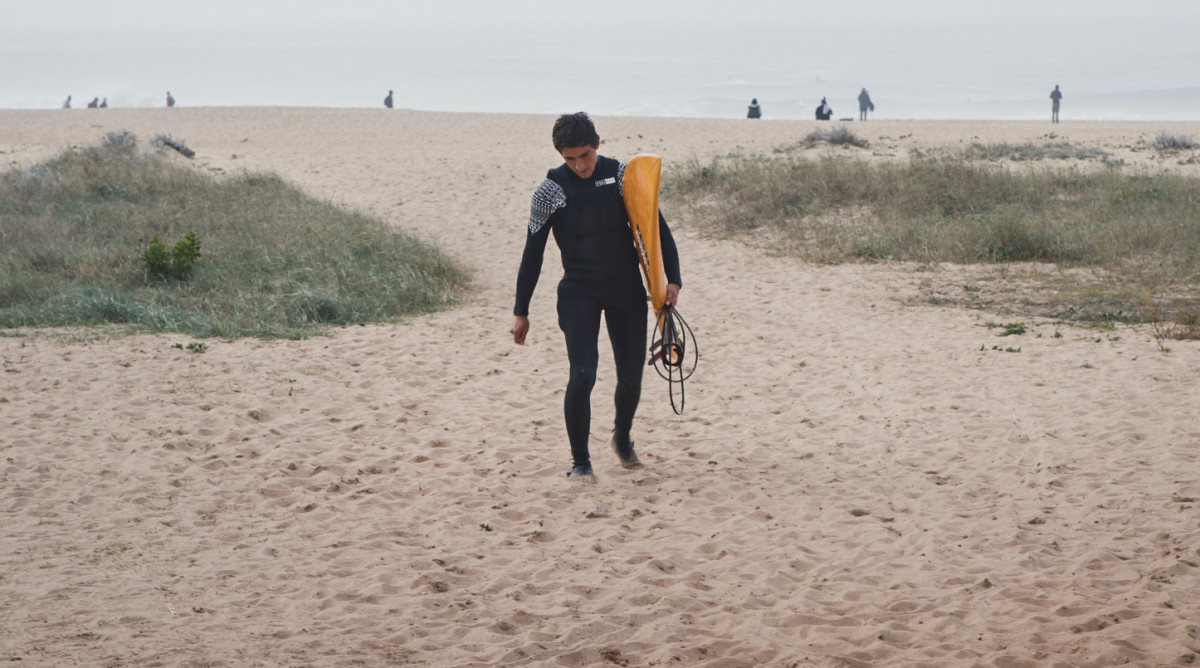
Surfers at Nazaré hurl themselves into a storm that might never release them. All for an ineffable thrill, all at the expense of worrying parents and loved ones. Ramon is no different. No one knows the dangers of Nazaré more than the man tasked with pulling people from its wreckage and who surfed Nazaré even before McNamara. After losing a daughter, he wouldn’t have been blamed for keeping Tony out of the water, safe, one less variable out of their control. Once again, Ramon found himself confronting fear, which he so often learned to trust.
“It’s always scary for me, but in the end I had to decide that I couldn’t let my fear keep him from growing,” Ramon says. “I have to trust that he knows what to do.
“Some people say it’s irresponsible, that maybe I’m not a good father for taking him out there. But this is his nature. He knows the rhythm. He was born in the rhythm. We’ve prepared our whole lives for this.”
When he’s not leading jet-ski rescue courses or surfing, Ramon works double shifts at the local Polen surfboard factory sanding and shaping surfboards. He’s had his hands on every board that Tony has ever used. But Ramon never tells Tony what to do with his career unless he’s asked first. He always encourages. He always does the thankless dirty work, like cleaning the docks and building a drying room for wetsuits, with a crooked smile. He is always up for a rescue. It is his most direct expression of love: “When he needs me, I’ll be there.”
But until recently, Ramon was the only person to tow Tony into those waves, because he couldn’t let anyone else be responsible for his son’s safety, because no one else should be guilty of his son’s peril. Because in Nazaré, death was always considered inescapable.
In January, veteran big-wave surfer Márcio “Mad Dog” Freire was the first surfer to die riding Nazaré’s swells. The 47-year-old Brazilian was a fearless member of the big-wave scene and had starred in the 2016 documentary Mad Dogs, where he surfed ferocious waves at Hawai‘i’s iconic Jaws surf break. His death shook Nazaré and the big-wave community—a devastating affirmation of the locals’ biggest fears, a sobering “you know it’s coming, just not when it’s coming” realization for Nazaré’s surfers.
With Old Testament awe, the kind that mixes intimidation and wonder, surfers often marvel at the chaos of Nazaré. Every wave breaks differently; they don’t curl like a lit fuse down a single line or crash tidily. Nazaré’s waves ricochet and pounce, not rogue waves but a guerilla force of nature blitzing from all directions. It is all part of the magic and terror of Nazaré.
“You can have the best moment of your life here and at the same time the worst moment of your life,” Tony says. “Everything happens in short periods of time. You can live moments here that you cannot live in any other place.”
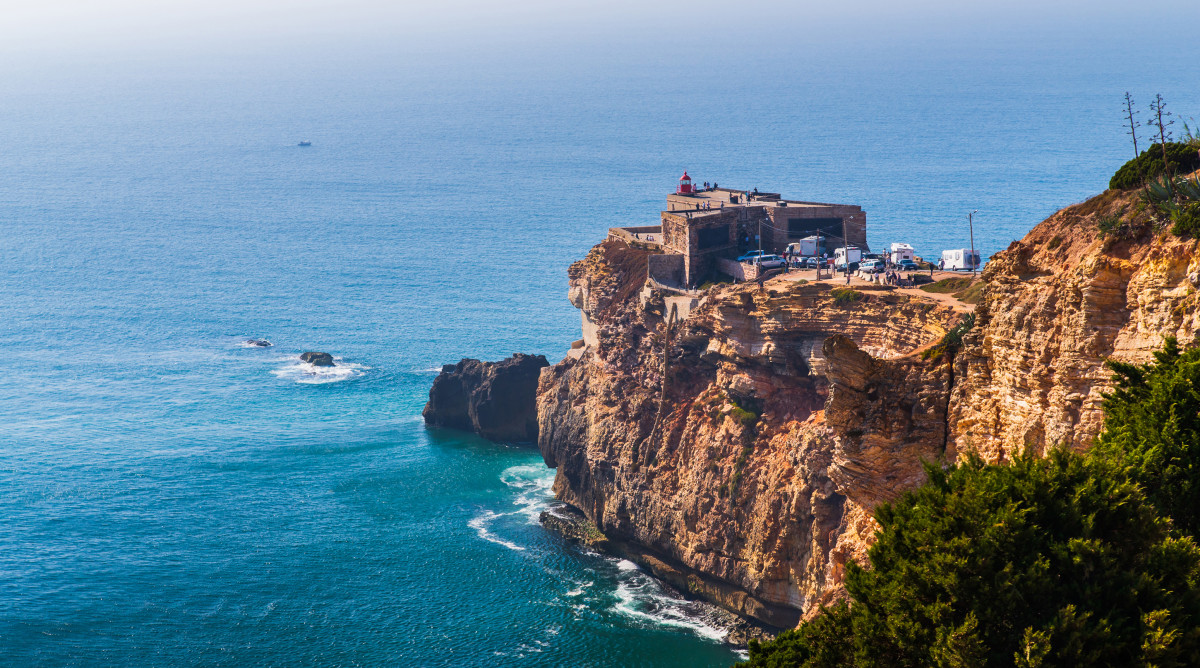
Accompanying those fleeting moments is the rush that all extreme athletes seek. More than fame, more than the wave itself, Tony seeks its release: “A mix of happiness, of fear, adrenaline. It is absolutely an addiction.” But he also knows that the rush is forbidden fruit, the very poison that drowned Icarus and led to the downfall of so many extreme athletes.
“I’m not scared of death,” he says. “It’s something I can’t control. If it’s going to happen, it will happen. I believe a lot in destiny. Nazaré already has my life written, and you need courage to accept that.”
It’s why he says the prayer. It’s why he leaves it open-ended, without the amen. It is never complete until he heads back to the marina.
“I always say thank you to her on my way in. Every time.”
To drive through the Nazaré marina is to tour a museum of the city’s history. Long slabs of warehouse are separated by individual garages with rusty, corrugated iron doors. Fishing boats, nets and oars are scattered throughout. Some of the garages are still owned by local fisherman; every year, more and more are bought up by surfers. Past a multimillionaire family’s longstanding fishing enterprise, there is McNamara’s pristine Mercedes lounge and the Red Bull compound. And tucked into a corner, without a brand’s logo lining the walls, is the Laureano hideaway.
Outside the hangar, Tony is struggling with a task possibly more challenging than a Big Mama—he can’t figure out how to tap a keg of beer. In swoops Ramon, who, with a series of twists and pulls, latches the tap to the keg and pumps out the foam. Time is running out before Nazaré’s surf scene descends upon them for a party to open the big-wave season.
Being the local kid, Tony feels an obligation to welcome the world back to Nazaré. When his surfing colleagues are out chasing swells at Jaws and Mavericks every offseason, he’s taking odd jobs renting out jet skis to tourists in Nazaré, trying to raise money for his next surfing excursion somewhere in the wintery southern hemisphere.
“I feel a bit of pressure because of that, because I am the youngest, because I’m the kid from Portugal, representing Nazaré,” Tony says. “There’s pride and pressure.”
The hangar, loaned to the Laureanos by the city to facilitate jet-ski safety courses for firemen and locals, is a gallery of refurbished flotsam and jetsam. Ramon converted driftwood into tables, a rusty anchor into a chandelier, shipping pallets into couches and an oil drum into a sink. After fixing the keg, he returns to appending a flatscreen TV to the loft he built for the night’s entertainment.
Within hours, the place is full and music is blasting. One of Tony’s friends is a professional DJ and spins tracks from the loft. Another friend, a professional photographer, circles along with a camera crew from HBO’s 100 Foot Wave. There are more than 10 nations represented at the party. Each arrival seeks out Tony for a hug. Ramon arrives with a leaning tower of pizza and cackles as he balances them.
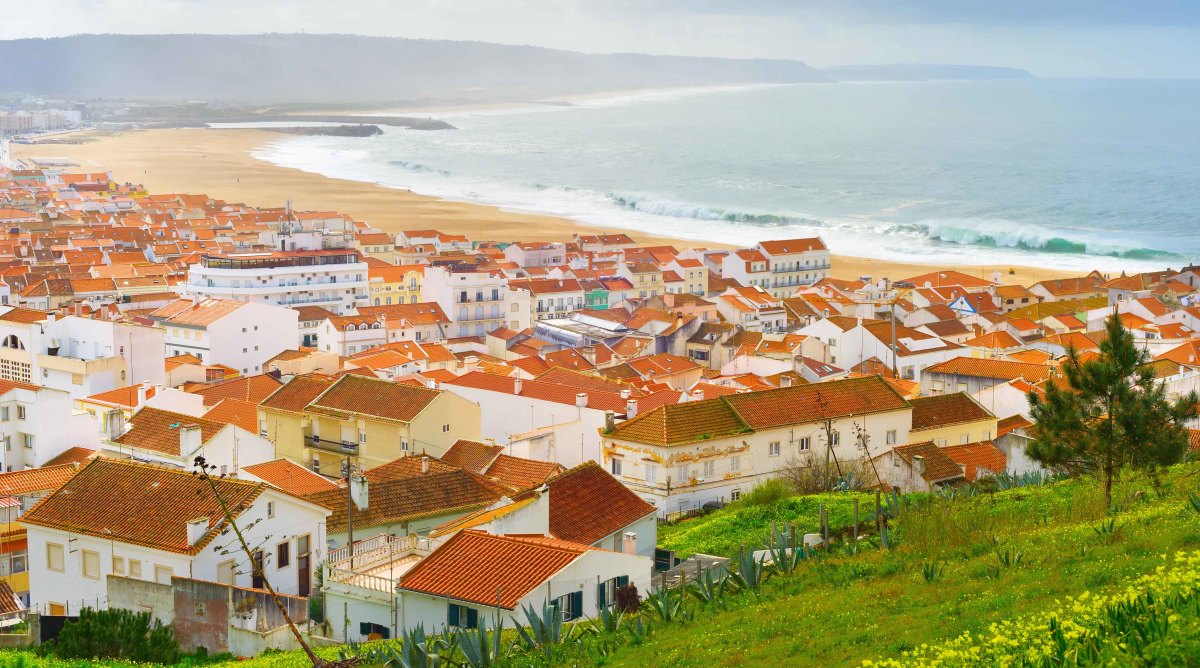
Since the Laureanos have no major sponsor (yet), everything at the party is out of pocket. The apparatus supporting Tony’s aspiring career is simply a collection of volunteer time, loaned talents, borrowed spaces and a father’s altruism. More than worrying about a major sponsor, more than vying for a world record, Tony struggles to find a way to return the kindnesses of home.
“I do all this because I love it, and it’s just amazing to see people that I love who also love big-wave surfing, and they love to support me doing whatever I love,” Tony says. “I don’t know how to express it. I feel the weight of their sacrifices.”
There is an American surfer circling the room, treating the party like a job fair. He brags about selling his house in Los Angeles for a profit to chase big waves in Nazaré. He says he recently bought a garage in the marina and a couple of jet skis. He says he wants the world record. No one knows who he is, because a community like this could never be bought.
Not long after sunset, the music cuts out, and atop the loft Tony appears wearing oversized flannel and a newspaper-boy hat that matches Ramon’s. With his raspy voice, which always sounds like he was screaming his lungs out at concert the night before, he bashfully introduces his highlight video from last season. The crowd heartily encourages and watches him slice across Nazaré’s treacherous swells and erupts with applause after each wave.
Everyone is fixated on the big screen, but Ramon is beaming at Tony. His smile is a canyon. There is no world record nor mythical wave that could lift him more than seeing his son atop the loft, his garage full of a family they forged. Tony was right: In Nazaré, you can live moments that don’t exist anywhere else.
